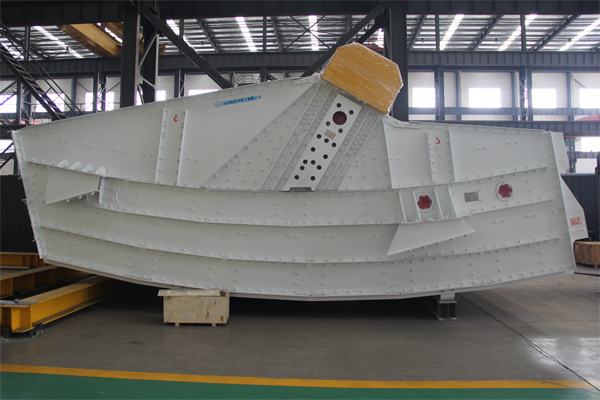What are the features of horizontal vibrating screen?
A horizontal vibrating screen is a type of screening equipment used to separate particles according to their size, shape, or composition by passing them through a vibrating mesh or sieve. Unlike inclined vibrating screens, which have a slope at the feed end to facilitate material movement, horizontal vibrating screens have a flat or horizontal screening surface.
Features and components of a horizontal vibrating screen

Screening Surface: The screening surface of a horizontal vibrating screen is typically a flat or slightly inclined mesh or sieve bed. The screen may consist of woven wire mesh, perforated plate, polyurethane panels, or other materials designed to suit the specific application requirements.
Vibrating Mechanism: Horizontal vibrating screens are equipped with one or more vibratory motors or eccentric shafts that generate vibratory motion. These motors or shafts are mounted on the screen frame and produce linear or elliptical vibrations that cause the material on the screen surface to move and stratify.
Screen Deck(s): Horizontal vibrating screens may have single or multiple decks stacked on top of each other. Each deck contains a separate screening surface, allowing for the classification of multiple particle sizes simultaneously. The number of decks and their arrangement depend on the application and desired screening efficiency.

Feed Box: The feed box is located at the inlet end of the horizontal vibrating screen and distributes the incoming material evenly across the width of the screen. It may incorporate adjustable gates or deflectors to control the material flow and distribution onto the screen surface.
Support Structure: Horizontal vibrating screens are typically mounted on a robust support structure, such as steel beams or frames, to provide stability and rigidity during operation. The support structure may also include isolation springs or dampers to minimize vibration transmission to surrounding equipment and structures.
Drive System: The vibratory motors or eccentric shafts are driven by a power source, such as electric motors or hydraulic motors, to generate the necessary vibration for material screening. The drive system may include variable speed drives or frequency converters to adjust the vibration amplitude and frequency according to process requirements.

Screen Media Options: Horizontal vibrating screens offer versatility in terms of screen media options, allowing operators to choose the most suitable type of screening surface for their specific application. Common screen media options include woven wire mesh, polyurethane panels, rubber panels, and perforated plate.
Horizontal vibrating screens are widely used in various industries, including mining, quarrying, aggregate processing, recycling, and construction, for sizing and classifying bulk materials such as aggregates, minerals, ores, coal, and construction debris. They offer efficient and effective screening solutions for a wide range of particle sizes and material types.



